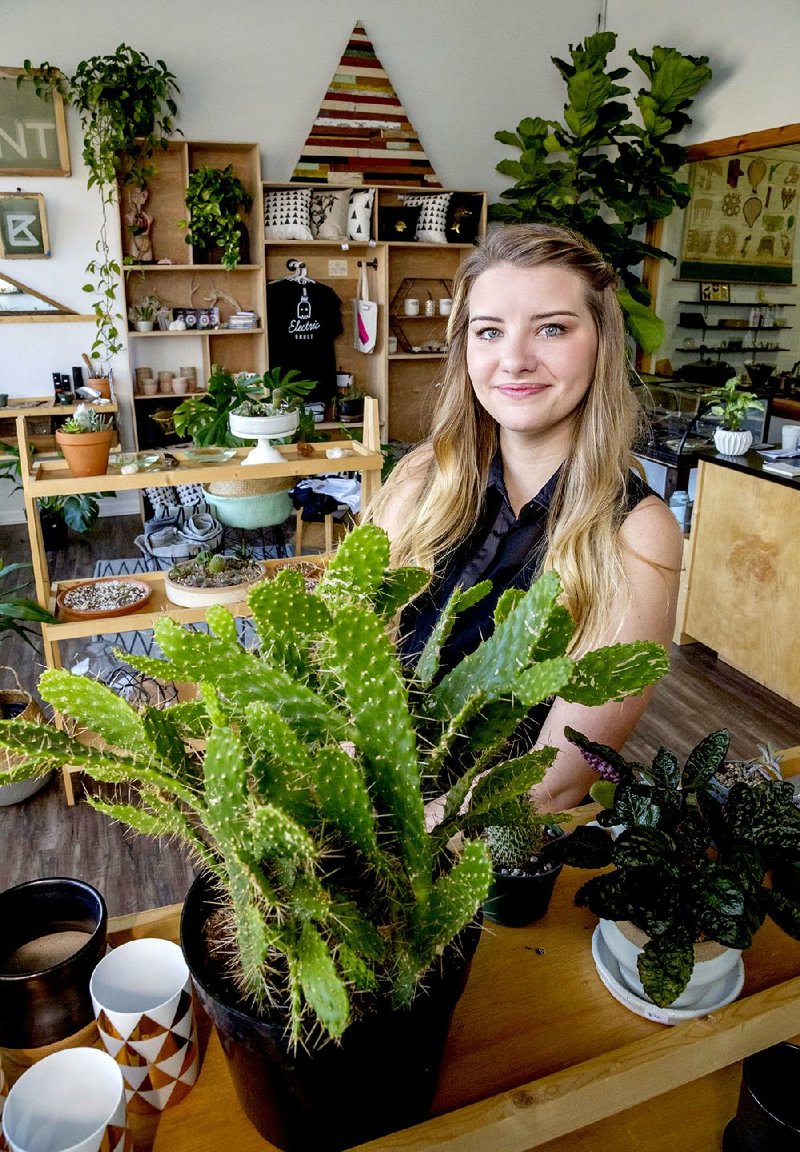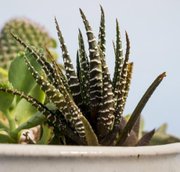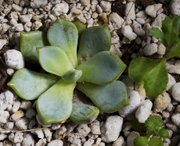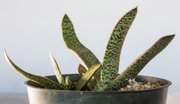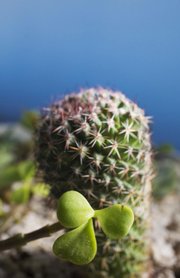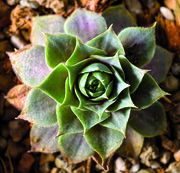Succulents are everywhere these days as a trendy, go-to home accessory for the uber-stylish and the wannabe plant lover.
Designers love their clean lines, artistic elements and versatility. Enthusiasts love their low-maintenance, laid-back qualities. And, they're just plain cute.
Many varieties of succulents exist, offering endless home decor possibilities. Their thick leaves can be angular, pointy or rosette-shaped and come in wide-ranging colors of green, purple and pink.
The aesthetic of succulents has "struck a nerve," says Stephen Black, co-owner of Westwood Gardens in Fayetteville.
"Succulents are just red hot in the nursery business for sure," he says. "Every television show, every advertisement you see, there's a succulent in a cute ceramic container in the middle of a table somewhere."
Social Media Stars
Botanists and gardeners are not in total agreement about what actually constitutes a succulent. While they are closely related to the cactus, the term succulent refers to hardy plants found in warm, arid climates that love bright sunlight and store water in their thick, juicy leaves and stems.
Houseplants can be so demanding, but succulents are easy to care for and hard to kill, making them particularly appealing to those lacking a green thumb.
Over-watering is the biggest mistake people make with succulents, says Shannon Shrum, co-owner of Electric Ghost, a screen-printing business that opened a succulent and cacti plant lab and retail space on Main Street in downtown Little Rock in April.
The best watering rule: Soak them, forget them and let the soil completely dry out before re-watering, Shrum says.
"Even if you're really bad and you water these things like once a month, chances are they're
going to be fine," she says. "It's really fun to have something to take care of, and they're super easy."
Well-drained Soil
A well-draining soil ensures perfect watering, Shrum says. At its in-store potting station, Electric Ghost offers a custom-mixed soil of coir, or coconut fiber, cut with turface and carbonite.
Succulent and cactus soil mixes, which usually include peat moss, perlite and sand, also work well, Black says.
Succulents thrive in areas with bright sunlight, such as on windowsills, Shrum and Black say. They are also mostly slow growing and stay contained and compact.
"You don't have to worry about how big it'll get," Black says. "You can do almost anything with them."
Avid plant lovers have long admired succulents, which also had a stint of popularity in the 1960s and '70s, Shrum says.
They are popular once again. The incredibly photogenic plants can be found posing in endless Pinterest and Instagram photos and in the stylish rooms on the pages of home-decor catalogs and magazines.
The family-owned Westwood Gardens, which has locations in Rogers and Springdale, has sold succulents since it opened in 1982. About five years ago, Black says they began selling out of the plants, and sales have "exploded" in the last two years.
Now, Black says they can sell up to 600 succulents per week. The plants cost $6 to $10.
Shrum says if succulents are a trend, she hopes it's one that sticks around. Her own interest in plants came from her mom, who has always been a plant lover, and evolved into a passion for succulents and cacti.
Her favorite thing about succulents is propagating them. Shrum says cut leaves can be placed on some soil and will sprout roots, which can be planted.
"It's such a fun hobby to see how you can take them from leaf cutting to growing an entirely new plant," she says. "You can start with one and end up with 10."
Electric Ghost's plants are $2 and up, making them "a really inexpensive way to add a really nice design element into a space," Shrum says.
Plants With Personality
Houseplants and greenery have long been popular in homes, bringing a calmness and coziness to any space, says Laure Antonetti Schutze, owner of L. Antonetti Design in Little Rock. Because of their looks and versatility, succulents are now a plant of choice.
"They are a plant that has a lot of personality," she says. "You can put those suckers everywhere. They fit into any area of the home."
Bookcases, coffee tables and side tables are popular spots, Schutze says.
"I love to break up items in a bookcase with a little bit of greenery," she says. "Succulents are perfect for that."
Kathryn LeMaster, owner of Kathryn J. LeMaster Art and Design in North Little Rock, says the shape and sculptural element that succulents add to a space are what she loves most about the plants.
"It's something that looks like art," she says, and adding a pop of natural color brings a sense of life to the room.
"There's something about having a growing, living thing. It's just an invisible element in a room that just creates a calming aspect and really enhances the living conditions of a space."
Succulents can be planted in groups to create a display and in just about any type of container, making their appeal limitless. Design ideas include succulents potted in mason jars, teacups or wooden boxes.
"Not every plant can do that," Schutze says. "It's such a special plant because you can put them in such fun, crazy containers. You're not limited to a typical terra cotta pot."
Even though some of the cutest and stylish ways to showcase succulents do not always create optimal growing conditions, Black says succulents will still survive longer than most other houseplants.
The biggest challenge with unconventional containers is lack of drainage holes, Shrum says.
"I hate finding a pot that I love the design of and realize it doesn't have drainage holes," she says. However, "if you have something and you say, 'I have to plant this in this,' it's doable."
It's just important to keep track of exactly how much water works best for the plant, she says.
Glass containers, such as terrariums, work well, because the changing color of the soil is visible, signaling when more water is needed. Shrum also makes glass wall hangings for succulents.
"[Wall planters] are a cool way to use wall space for living art to see them on a different plane," LeMaster says.
Schutze says taking plants vertically "puts them in unexpected places because they're kind of an unexpected plant."
LeMaster and Schutze say succulents are one of the most versatile accessories that can go anywhere and with anything. The best approach to accessorizing with succulents is having fun and experimenting -- find a succulent that you like, try out different containers and move it from place to place.
"If you're stuck and feel like you need to accessorize, try using a succulent," Schutze says.
HomeStyle on 12/03/2016
